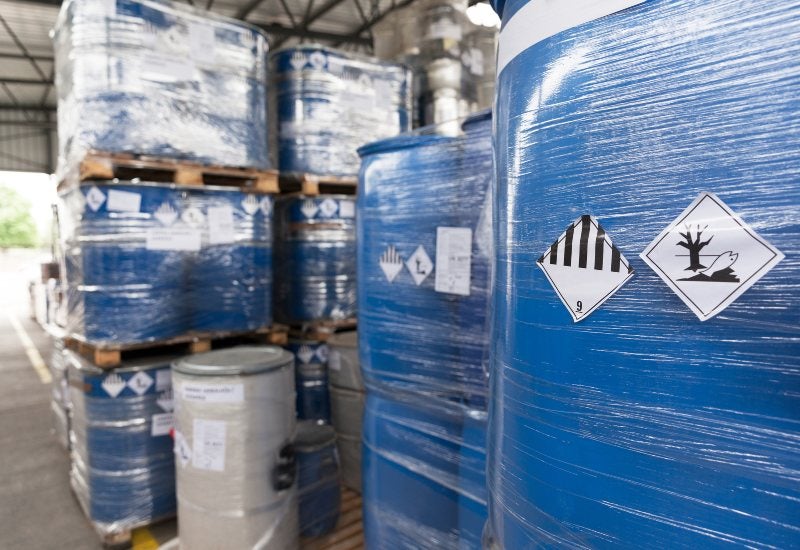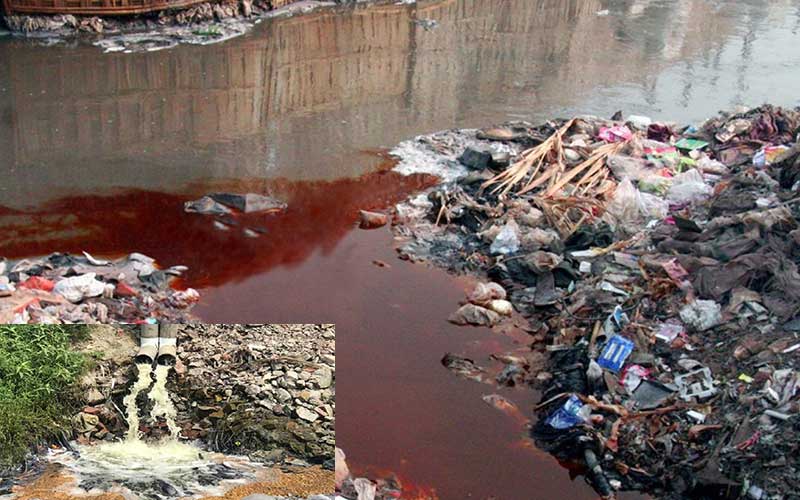Innovative Industrial Wastewater Treatment Solutions: Protecting the Environment
Innovative Industrial Wastewater Treatment Solutions: Protecting the Environment
Blog Article
How Fluid Garbage Disposal Functions: A Detailed Summary of Strategies and Technologies Used

Review of Liquid Waste Kind
The intricacy of fluid waste types requires a comprehensive understanding of their qualities and ramifications for disposal. Liquid waste can broadly be categorized into numerous types, including industrial, local, agricultural, and contaminated materials. Each classification displays unique residential or commercial properties, needing details administration techniques to alleviate environmental and wellness dangers.
Industrial liquid waste stems from manufacturing processes and commonly contains a range of impurities, such as hefty metals, solvents, and natural compounds. Local liquid waste, primarily comprising wastewater from homes and commercial facilities, includes natural matter, nutrients, and virus (industrial wastewater treatment). Agricultural fluid waste, including overflow from ranches, may include fertilizers, chemicals, and animal waste, presenting dangers to water top quality and communities
Unsafe liquid waste is characterized by its toxicity, sensitivity, or potential to trigger harm. Comprehending these varied liquid waste types is crucial for establishing effective disposal approaches and ensuring compliance with environmental guidelines.
Physical Therapy Approaches

Testing is the first action, where bigger bits and debris are gotten rid of from the fluid waste making use of displays or grates. This process protects downstream devices from damages and guarantees smoother procedure. Complying with screening, sedimentation makes use of gravitational pressure to different solids from fluids. In sedimentation storage tanks, heavier particles resolve near the bottom, creating a sludge layer, while the cleared up fluid can be further treated.
Filtering is one more necessary technique that includes passing the fluid via porous materials, such as sand or membranes, to catch smaller particles. This step enhances the top quality of the fluid, making it suitable for succeeding therapy processes.

Chemical Therapy Techniques
Chemical therapy strategies are vital for successfully taking care of liquid waste, specifically in attending to dissolved and colloidal impurities that physical approaches might not effectively get rid of. These methods utilize different chemical representatives to counteract, precipitate, or transform unsafe materials into less damaging kinds.
One usual technique is coagulation and flocculation, where chemicals such as alum or ferric chloride are included in advertise the gathering of suspended fragments. This procedure improves sedimentation, permitting for much easier elimination of the resulting sludge. In addition, oxidation procedures, utilizing agents like chlorine or ozone, are used to break down intricate natural compounds and pathogens, providing the waste much safer for discharge or further therapy.
Neutralization is one more vital method, which changes the pH of acidic or alkaline waste streams to neutral degrees, preventing possible harm to downstream systems and the setting. Furthermore, progressed oxidation procedures (AOPs) make use of mixes of oxidants and ultraviolet light to degrade relentless toxins, achieving a greater degree of treatment performance.
Organic Therapy Processes
Organic therapy processes play a critical role in the management of fluid waste by using bacteria to disintegrate natural matter and reduce impurity degrees. These processes can be broadly classified right into anaerobic and cardiovascular treatments, each employing particular microbial areas to attain reliable waste deterioration.
Aerobic therapy includes making use of oxygen to assist in the break down of natural products by bacteria. This process is typically implemented in turned on sludge systems, where aeration storage tanks provide a favorable environment for microbial growth, resulting in the oxidation of natural contaminants. The resultant biomass can be separated from dealt with effluent via sedimentation.
On the other hand, anaerobic treatment takes place in the absence sites of oxygen, counting on different microorganisms to damage down raw material. This technique is especially beneficial for high-strength waste, as it generates biogas, a renewable energy resource, while decreasing sludge production. Technologies such as anaerobic digesters are frequently utilized in commercial and municipal applications.
Both anaerobic and cardio organic therapies not only decrease the ecological impact of liquid waste however also promote source healing, making them necessary components of lasting waste management techniques. Their effectiveness, effectiveness, and flexibility sustain their prevalent implementation throughout numerous industries.
Arising Technologies in Disposal
Cutting-edge methods to liquid waste disposal are swiftly developing, driven by improvements in innovation and a boosting focus on sustainability. Among these emerging innovations, membrane bioreactors (MBRs) have actually acquired traction for their capability to incorporate organic therapy with membrane purification, resulting in top notch effluent that can be recycled in different applications. MBRs make it possible for smaller sized impacts and extra efficient procedures compared to traditional systems.
Another encouraging growth is the use of anaerobic digestion combined with nutrient healing innovations, which not just treats liquid waste however also creates biogas and recovers useful nutrients like nitrogen and phosphorus. This double advantage boosts source efficiency and decreases environmental impact.
In addition, advanced oxidation processes (AOPs) are being taken on for the degradation of complex organic toxins. These approaches make use of effective oxidants and stimulants to damage down pollutants at the molecular level, providing a highly efficient service for tough waste streams.
Moreover, the integration of expert system and device understanding in waste administration systems is enhancing functional effectiveness and predictive upkeep, resulting in reduced costs and improved environmental compliance. These technologies mirror a considerable change towards even more sustainable and efficient fluid garbage disposal methods.
Conclusion
To conclude, effective liquid garbage disposal necessitates a thorough understanding of different methods and technologies. The integration of physical, chemical, and organic treatment approaches makes sure the effective monitoring of varied waste types. Additionally, the introduction of ingenious innovations enhances therapy effectiveness and promotes sustainability in waste administration practices. By continually advancing these techniques, it ends up being feasible to address the expanding obstacles related to fluid waste, eventually adding to environmental defense and resource recuperation.
Liquid waste disposal is an important element of ecological administration, needing an extensive understanding of various methods and innovations tailored to various waste kinds. Liquid waste can broadly be classified right into several types, including industrial, local, agricultural, and unsafe waste. Agricultural fluid waste, including overflow from farms, might her response consist of fertilizers, pesticides, and pet waste, posing threats to water top quality and ecosystems.
Various physical treatment techniques play an essential duty in handling fluid waste properly - industrial wastewater treatment.In final thought, effective liquid waste visit this website disposal necessitates a comprehensive understanding of various methods and technologies
Report this page